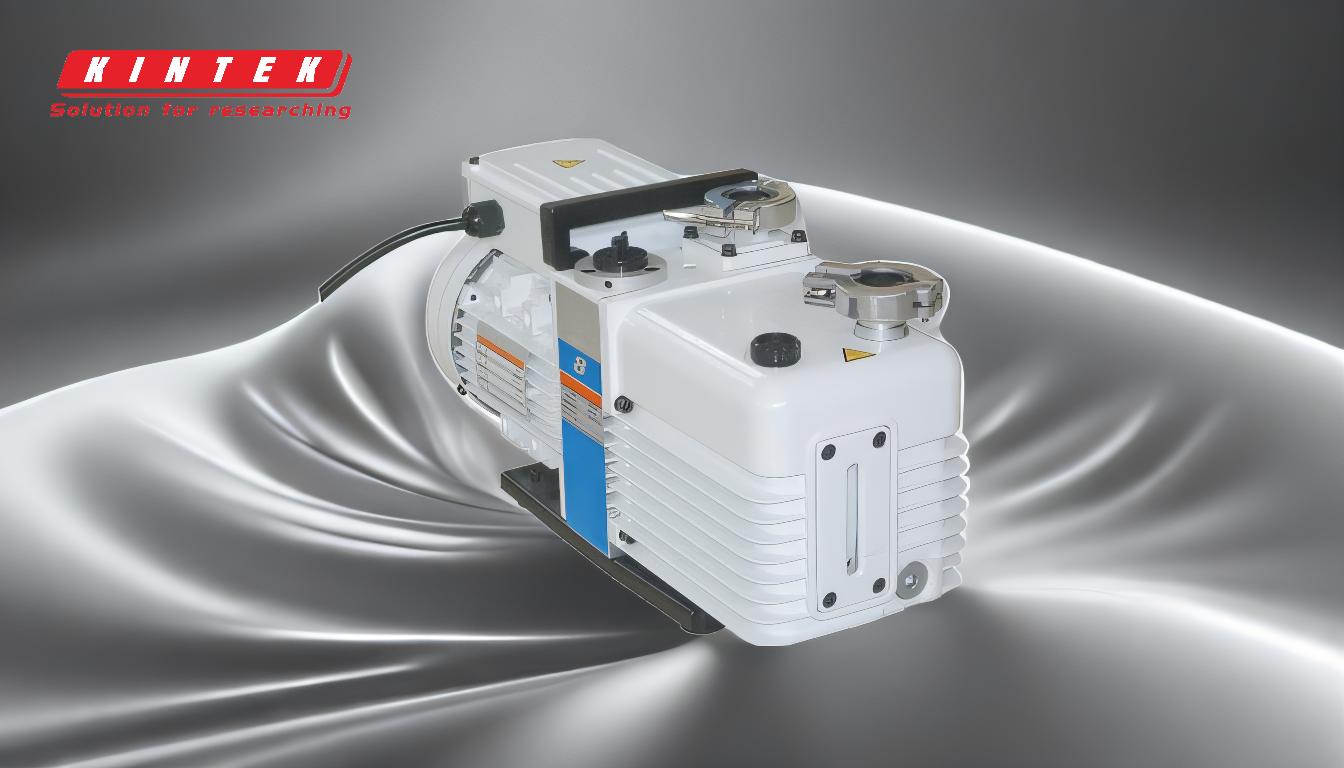A liquid ring vacuum pump operates on the principle of creating a vacuum by using a rotating impeller with vanes that are bent towards the direction of rotation. The impeller is positioned off-center within the pump casing, and as it rotates, it forms a moving cylindrical ring of liquid against the casing walls due to centrifugal force. This liquid ring creates crescent-shaped spaces between the vanes, which vary in size as the impeller rotates. Near the suction inlet, the volume of these spaces increases, causing a drop in pressure that draws in gas. As the impeller continues to rotate, the volume between the vanes decreases, compressing the gas and expelling it through the discharge port. This process creates a continuous flow of gas, making the pump suitable for handling liquids, vapors, and small solid particles, particularly in industries like sugar mills, petroleum refineries, and power plants.
Key Points Explained:

-
Off-Center Impeller with Bent Vanes:
- The impeller is positioned off-center within the pump casing and has vanes bent towards the direction of rotation. This design is crucial for the formation of the liquid ring and the creation of varying volumes between the vanes.
-
Formation of the Liquid Ring:
- As the impeller rotates, centrifugal force causes the liquid to form a cylindrical ring against the casing walls. This liquid ring acts as a seal, creating airtight compartments between the vanes.
-
Crescent-Shaped Spaces:
- The vanes create crescent-shaped spaces of different sizes as they rotate. Near the suction inlet, these spaces increase in volume, leading to a pressure drop that draws in gas.
-
Gas Compression and Expulsion:
- As the impeller continues to rotate, the volume between the vanes decreases due to the eccentric positioning of the impeller and the liquid ring. This decrease in volume compresses the gas, which is then expelled through the discharge port, creating a continuous flow.
-
Handling of Liquids, Vapors, and Solid Particles:
- Liquid ring vacuum pumps are capable of handling liquids, vapors, and microscopic solid particles with minimal sensitivity. This makes them ideal for applications in industries such as sugar mills, petroleum refineries, and power plants.
-
Applications in Various Industries:
- These pumps are used in a wide range of industries for applications such as mineral recovery, moisture extraction, ash management, and vacuum filtration. Their ability to handle heat-sensitive and explosive materials makes them particularly valuable in these settings.
-
High Flow Rate and Saturated Vapor Pressure:
- Liquid ring vacuum pumps can achieve high flow rates, up to 30,000 m³/h, but require attention to the saturated vapor pressure of the liquid ring to maintain airtightness and efficient operation.
By understanding these key points, one can appreciate the efficiency and versatility of liquid ring vacuum pumps in various industrial applications.
Summary Table:
| Key Feature | Description |
|---|---|
| Off-Center Impeller with Vanes | Impeller positioned off-center with bent vanes forms a liquid ring and creates varying volumes. |
| Liquid Ring Formation | Centrifugal force creates a cylindrical liquid ring, acting as a seal for airtight compartments. |
| Crescent-Shaped Spaces | Spaces between vanes vary in size, drawing in gas near the suction inlet. |
| Gas Compression & Expulsion | Gas is compressed as space decreases and expelled through the discharge port. |
| Handling Capabilities | Handles liquids, vapors, and microscopic solids with minimal sensitivity. |
| Industrial Applications | Used in sugar mills, refineries, and power plants for mineral recovery, ash management, and more. |
| High Flow Rate | Achieves flow rates up to 30,000 m³/h, requiring attention to saturated vapor pressure. |
Discover how a liquid ring vacuum pump can optimize your operations—contact our experts today!






